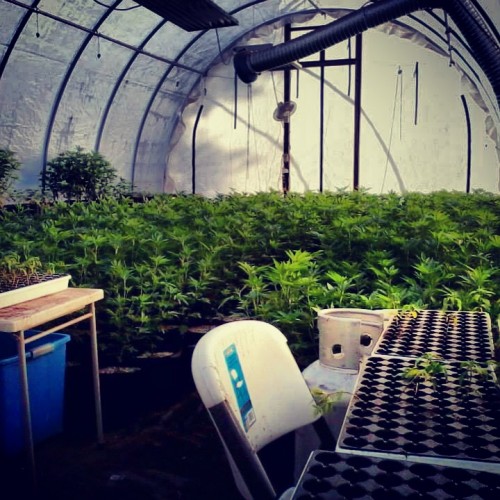With the beginning of the year rapidly moving into play and planting season now upon us, there is a lot to consider for the future of growing and the mounting impact on the horizon from so much new global involvement with cannabis. Many avenues of poor agricultural practices have been exhausted at the cost of our health and well being. It shows itself through the rising rates of disease and disorders invading so many lives from which just a few generations ago rarely occurred… What we now call "Organics" was known only as farming in the not so distant past.The modern age of agriculture has brought a long list of problems. The rapid depletion of top soil, destruction of the microbial food web and drastic reduction of humic and fulvic activity through the use of heavy synthetic based fertilizers. This has left an enduring sterile effect on our planet . Using countless varieties of chemical herbicides and pesticides for decades have further irradiating the soil. Much of medical research has found most diseases and disorders stem from trace mineral deficiency. Now a new generation, hungry for change are seeking new age solutions from the accumulation of a few generational mistakes. A recollection of old ways combined with modern science are being adopted, applied and regarded as the future of agriculture. Here's an inside look into the process of how this new found super soil is being created and how results are turning heads to acknowledge the superior quality at Humboldt Seed Organization. So what does the future hold for cannabis and it's production in large scale agriculture? There are tens of thousands large scale grows rapidly appearing inside and outdoors in the states of Colorado, Washington, and California. How can we avoid the same patterns we see in standard agricultural practices? The answer lies in appropriate waste management and the new found application is turning pollution into profit. Reducing footprints and overheads alike, as the redirection of organic material ranging from common kitchen waste to yard waste to large scale green waste working in congruence with fermentation, bio-remediation , and biodynamic techniques has resulted in the new age of super soils. This super soil is flourishing with highly beneficial microbial life accelerating the breakdown of organic material. This creates high levels of humic and fulvic activity providing food in plant available forms. This is all supported by a rich complex web of biology acting out nature's chain of command. The fundamentals into the proper assembly of these biodynamic cold composting piles consist of a wide variety of green waste material, the introduction of beneficial microbes, abundant air flow, and maintaining proper moisture levels. Organic material is placed in thin breathable layers (lasagna) supported by a wind tunnel reaching heights of no more than 5ft. This prevents unnecessary compression. Effective microorganisms (EM-1) designed to aid in the digestion process of organic material are soaked in straw and used as layers to expedite microbial activity . Manures like rabbit, goat, sheep, horse, chicken and cow are excellent sources of nitrogen as well as green grass and other fresh green waste which help to raise temperatures to thermophilic levels (113-158F) during the beginning period which plays a vital role in composting. This process kills undesired fungal pathogens and seed starts alike. As temperatures cool, worms then become the primary source of breakdown. They rapidly accelerate the process, excreting an immense amount of microbial life back into the soil, essential to maintaining complex diversity. The unique part of this process is it's rarely the same twice due to the variation of green waste material from region to region requiring little maintenance as the pile doesn't need to be turned due to the wind tunnel through the bottom of the pile. Contingent upon the organic material in your region will determine the design and composition of your compost pile. This leaves the door wide open to be resourceful and diligent when exploring your options. Understanding what ingredients are available in a close proximity and the amount of time it will take to complete a usable compost will help to further simplify the process. Creating an array of green waste material to choose from to make your compost pile is crucial to diversifying populations of microbes native to your area. Material such as leaves, grass clippings, wood chips, manure, straw and living green material such as bushes, shrubs and weed growth all play important roles in basic ingredients. Here's an array of ingredients and layers in the process to help further understand what these piles visually look like throughout the building phases.






Give us your feedback
Your rating (between 1 and 5)
1 2 3 4 5Leave a comment